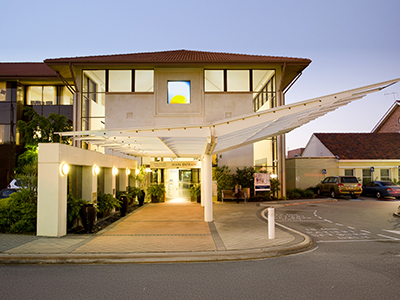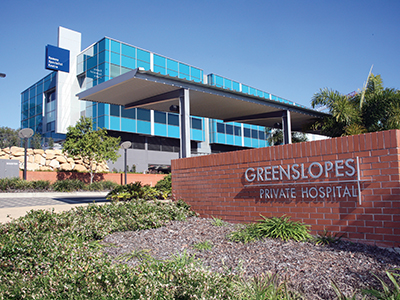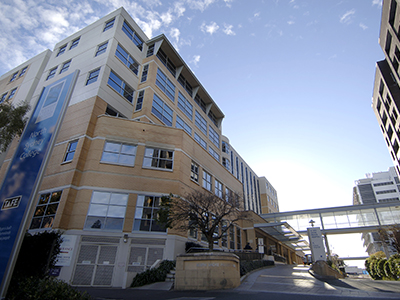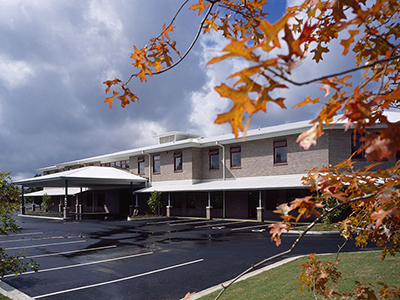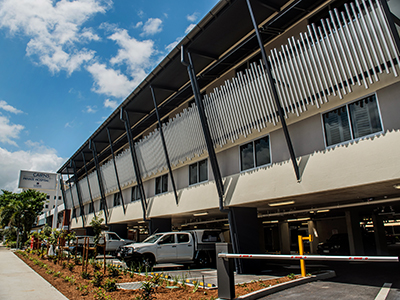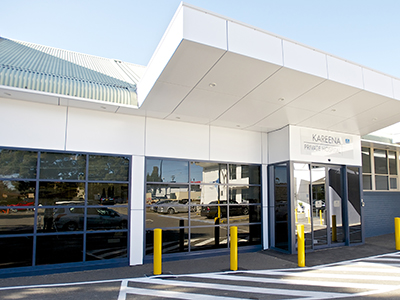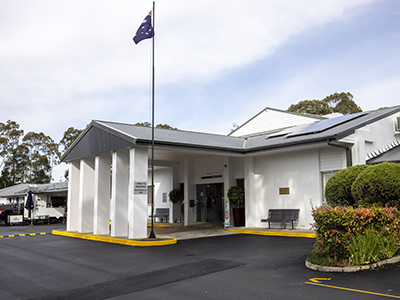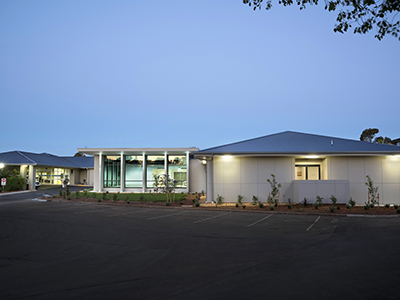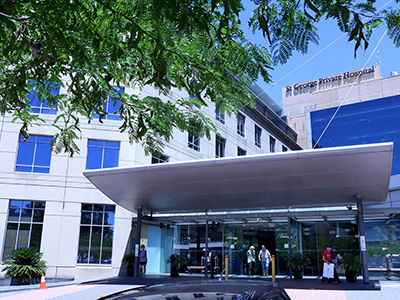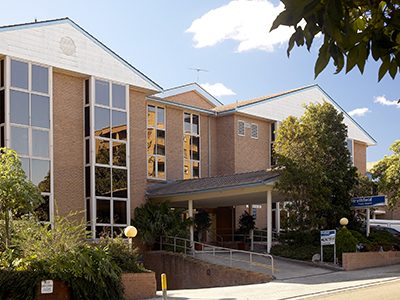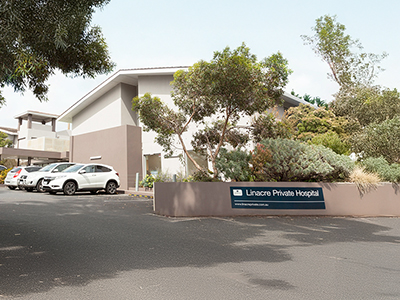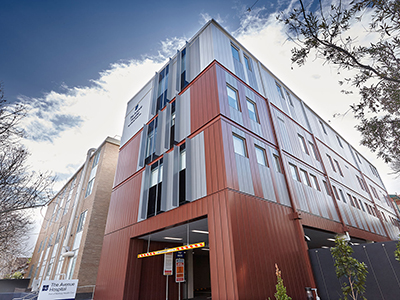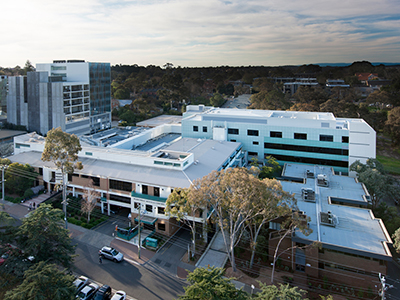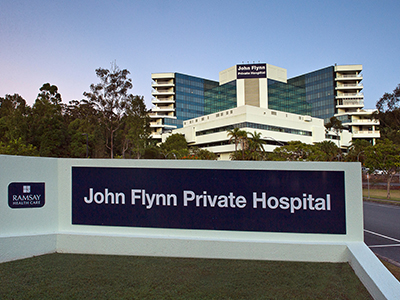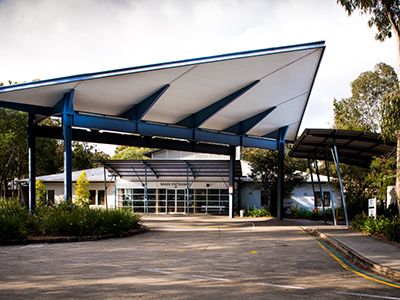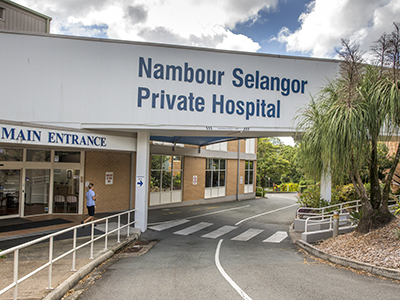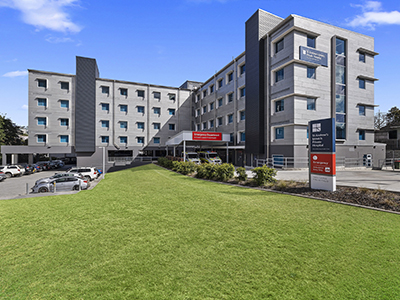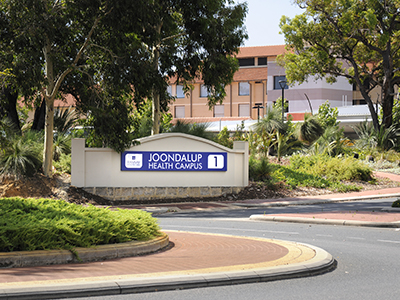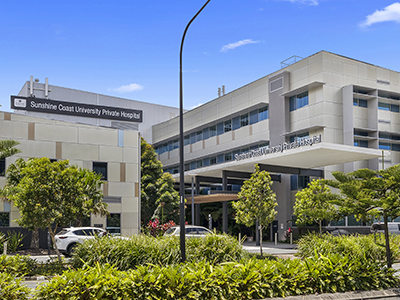Types of bariatric surgery
Bariatric specialists and their dedicated team are here to support you every step of the way. Your specialist will take the time to talk through all your options and give you advice so you can feel confident about your choices.
From your first consultation to your recovery, you’ll have access to modern facilities and a team committed to providing coordinated, high-quality care throughout your weight loss journey.
Below you will find information on some of the most common procedures.
Bariatric surgery procedures
Below you will find information on some of the most common procedures. Click the plus sign (+) on the right side of any heading to expand and view more information.
Adjustable gastric banding or lap band surgery
The adjustable gastric band, or lap band, is a silicone ring placed around the upper part of the stomach to create a smaller pouch. This can slow the passage of food and may help individuals feel full after eating smaller portions.
Gastric banding is typically a minimally invasive procedure and may be associated with shorter hospital stays, faster recovery times, smaller scars and a lower risk of certain complications. However, outcomes can vary and a healthcare professional can help determine if this option is suitable.
The gastric banding procedure
Performed under general anaesthesia, the procedure typically takes about an hour and is often done using laparoscopic (keyhole) techniques. During the surgery, a small section of the stomach is positioned over the band and secured, creating a smaller upper pouch.
The band is filled with a saline solution and can be adjusted by the surgeon over time. By adding or removing fluid, the band can be tightened or loosened to help manage appetite.
Recovery and aftercare
After surgery, the recovery process typically begins with a liquid diet, followed by a gradual transition to pureed foods and eventually solid foods, allowing the body time to adjust.
Regular follow-up appointments are essential for monitoring progress and ensuring the gastric band is functioning effectively. The first adjustment is usually scheduled a few weeks after surgery, with additional adjustments as needed. These appointments help fine-tune the band for optimal support.
The surgeon and dietitian provide ongoing guidance around nutrition and overall health, supporting a smooth adjustment to new eating habits and helping address any challenges along the way.
Gastric bypass
Gastric bypass surgery is a weight loss procedure that modifies the digestive system to limit food intake and absorption. During the surgery, a small pouch is created at the top of the stomach, reducing the amount of food that can be consumed at one time. This pouch is then connected to a Y-shaped section of the small intestine, allowing food to bypass most of the stomach and part of the small intestine.
The gastric bypass procedure
Gastric bypass is performed under general anaesthesia, often using a minimally invasive laparoscopic (keyhole) approach, which may result in smaller incisions and a quicker recovery.
The procedure supports weight loss through two key mechanisms:
- Smaller stomach pouch: The reduced stomach size allows only small amounts of food to be consumed, helping with portion control and early satiety.
- Altered digestion: Since food bypasses part of the stomach and small intestine, fewer calories and nutrients are absorbed, which can contribute to weight loss.
Recovery and aftercare
Recovery from gastric bypass surgery typically takes four to six weeks. Initially, only clear fluids can be consumed, followed by a gradual transition to pureed foods and then solid foods as tolerated.
Ongoing support from a healthcare team, including dietitians and specialists, is important for long-term success. They will provide guidance on nutrition, portion sizes and lifestyle changes to help maintain health and support weight loss over time.
Mini gastric bypass
Mini Gastric Bypass (MGBP), also known as Single Anastomosis Gastric Bypass (SAGB), is a weight loss procedure that reduces food intake and limits nutrient absorption. It is often considered for individuals with a higher Body Mass Index (BMI). On average, patients may lose up to 70% of their excess body weight over 12 to 18 months, though results vary based on individual factors.
The mini gastric bypass procedure
Mini gastric bypass is typically performed laparoscopically (keyhole surgery) under general anaesthesia.
The procedure supports weight loss through two key mechanisms:
- Smaller stomach pouch: A small pouch is created, similar to a sleeve gastrectomy, reducing the amount of food that can be consumed at one time, which may help with portion control and satiety.
- Bypassed section of the small intestine: Like a traditional gastric bypass, the surgery reroutes a section of the small intestine, reducing calorie and nutrient absorption, which can contribute to weight loss.
Recovery and aftercare
Most patients recover within four to six weeks. The post-surgery diet follows a structured progression, beginning with liquids, transitioning to pureed foods and gradually reintroducing solid foods.
Ongoing support from a healthcare team, including dietitians and specialists, is important for long-term success. They provide guidance on nutrition, portion sizes, and lifestyle adjustments to help maintain overall health and support sustainable weight loss.
Revision surgery
For people who have previously undergone bariatric surgery but have not achieved or maintained their desired weight loss, or who have experienced complications, revision surgery may be considered as an option to improve outcomes.
Revision surgery involves modifying or converting the original bariatric procedure to a different approach that may be more suitable for an individual’s needs.
Because revision surgery is more complex than the initial procedure, a comprehensive evaluation and consultation with a surgical team is essential. This assessment helps determine the most appropriate approach and ensures that all potential risks, benefits and expectations are carefully considered.
Sleeve gastrectomy
A sleeve gastrectomy can reduce the stomach’s size by up to 75%, creating a smaller, tube-like shape that limits food intake. By promoting a feeling of fullness with smaller food portions, this procedure may support early and sustained weight loss. Unlike gastric banding, a sleeve gastrectomy is permanent and does not require ongoing adjustments.
The sleeve gastrectomy procedure
Sleeve gastrectomy is performed under general anaesthesia, often using laparoscopic (keyhole) techniques. The surgery typically takes between 60 and 90 minutes. This minimally invasive approach may be associated with benefits such as a shorter hospital stay, quicker recovery and reduced discomfort.
Recovery and aftercare
Following surgery, a structured diet plan will be introduced in stages, starting with liquids before transitioning to soft foods and eventually solid meals. Since the stomach is smaller, portion control and balanced nutrition are important for recovery and long-term success.
Most patients can return to normal activities within two to four weeks, depending on individual recovery. Ongoing follow-up with a surgeon and dietitian will help support healthy eating habits and overall well-being after the procedure.
Potential benefits of bariatric surgery
Bariatric surgery may offer several health benefits for individuals with obesity. However, outcomes can vary and long-term success depends on lifestyle changes and ongoing medical support.
Some potential benefits include:
- A possible reduction in the risk of obesity-related illnesses and premature death, though results differ for each individual.
- Weight loss, with many patients losing a significant amount of excess weight, which can assist with weight management.
- Improvements in energy levels and overall wellbeing, which may contribute to increased confidence and quality of life.
- Support for developing and maintaining healthy habits with ongoing guidance from a healthcare team.
- A potential reduction in the risk of obesity-related cancers, though individual risk factors vary.
It is important to discuss the potential benefits and risks of bariatric surgery with a health care professional to determine if it is a suitable option for you.
Ramsay Newsroom
Stay up-to-date with hospital news, developments, research highlights and innovation.
